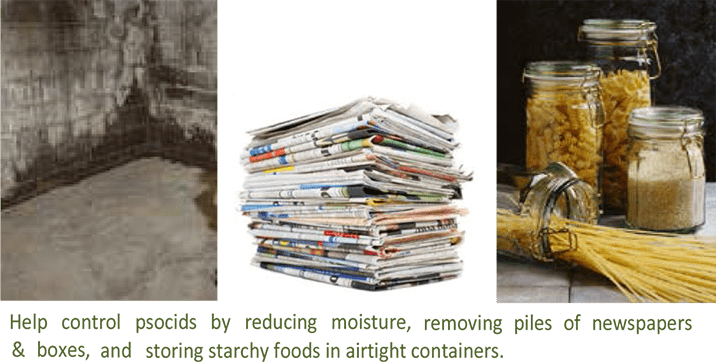Identification and Life Cycle
There are two common types of Psocids (Psocoptera), booklice and barklice. Both psocids feed on microscopic molds and mildews associated with high-humidity condititions in such areas as basements and crawl spaces. Since psocids cannot retain water in their bodies, they cannot live in a low-humidity environment.
On occasion, some people may find a pale gray or brown insect in their food cupboards. These insects can be found in the folds of packaging, or in dry food items such as flour, sugar and milk powder. Psocids are not caused by poor hygienge or an unkept home. It is a common household pest that lives in dry powdery foods, and even in dust and debris under the refrigerator, oven, washing machine, etc.
Psocids are not true lice. They do have a similar appearance to lice, but their feeding habits make them different. They are tiny, soft-bodied insects, 1/32 to 1/4 – inches long, an antennae, mouthparts, large eyes that protrude from the side of the head, and a transparent to a light gray to light brownish colored body (may be winged or wingless). They do not jump, but are fast runners.
The life cycle from egg to adult can take approximately 4 weeks to 2 months to complete. The female may lay up to 60 to 100 eggs at one time during the warm summer months. She deposits her eggs singly or in clusters near a food source, and often hide them by covering them with silken webs or debris. The eggs will hatch after 11 days into nymphs. They will go through several molts before becoming adults, and live up to 6 months





Comments are closed.